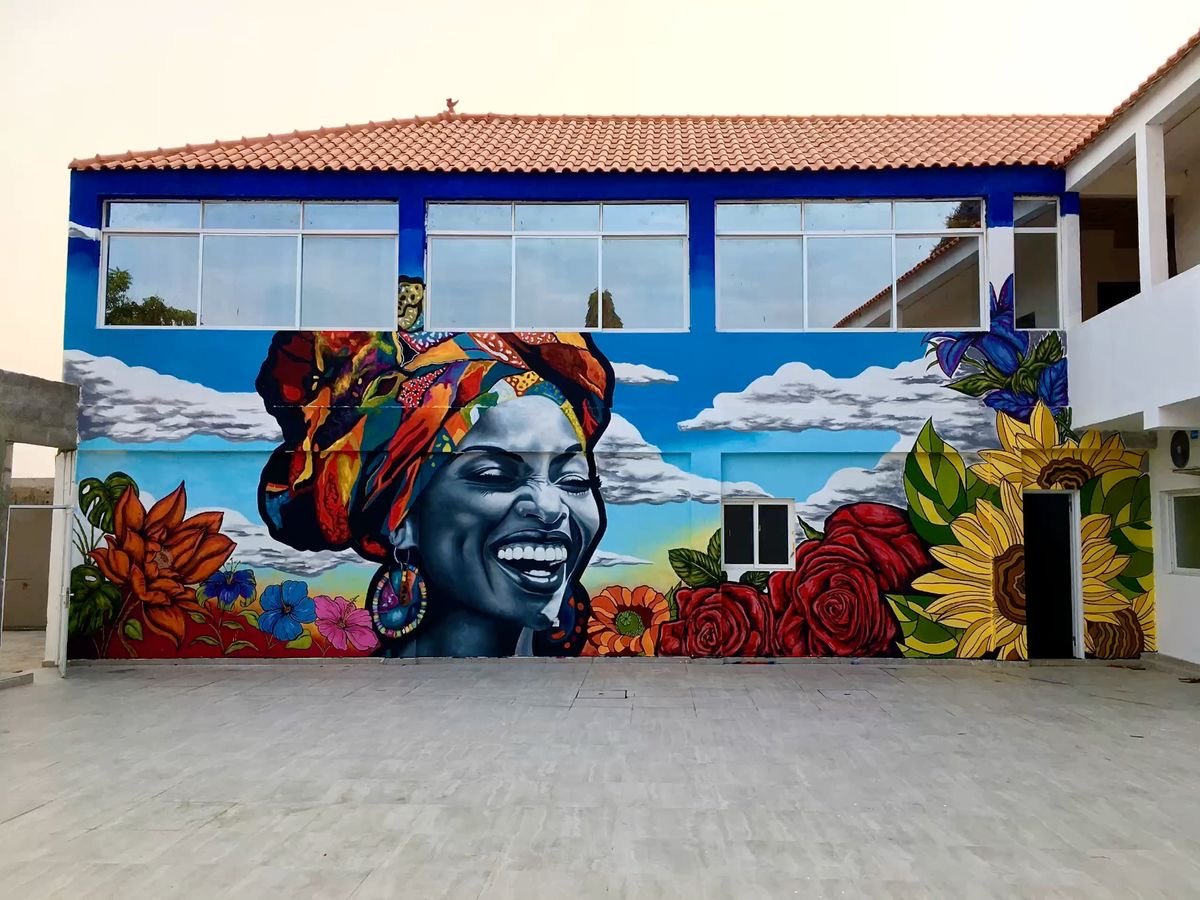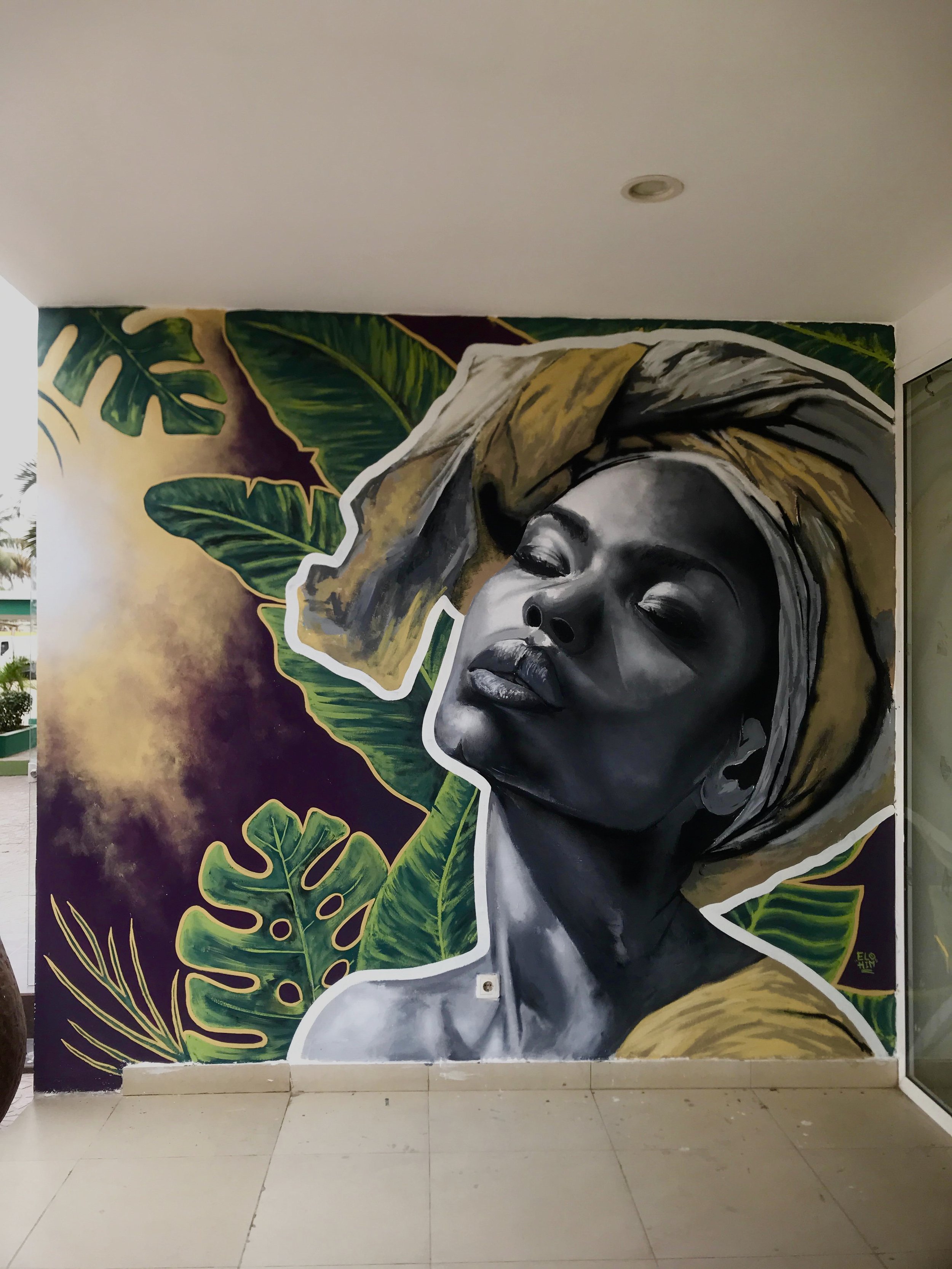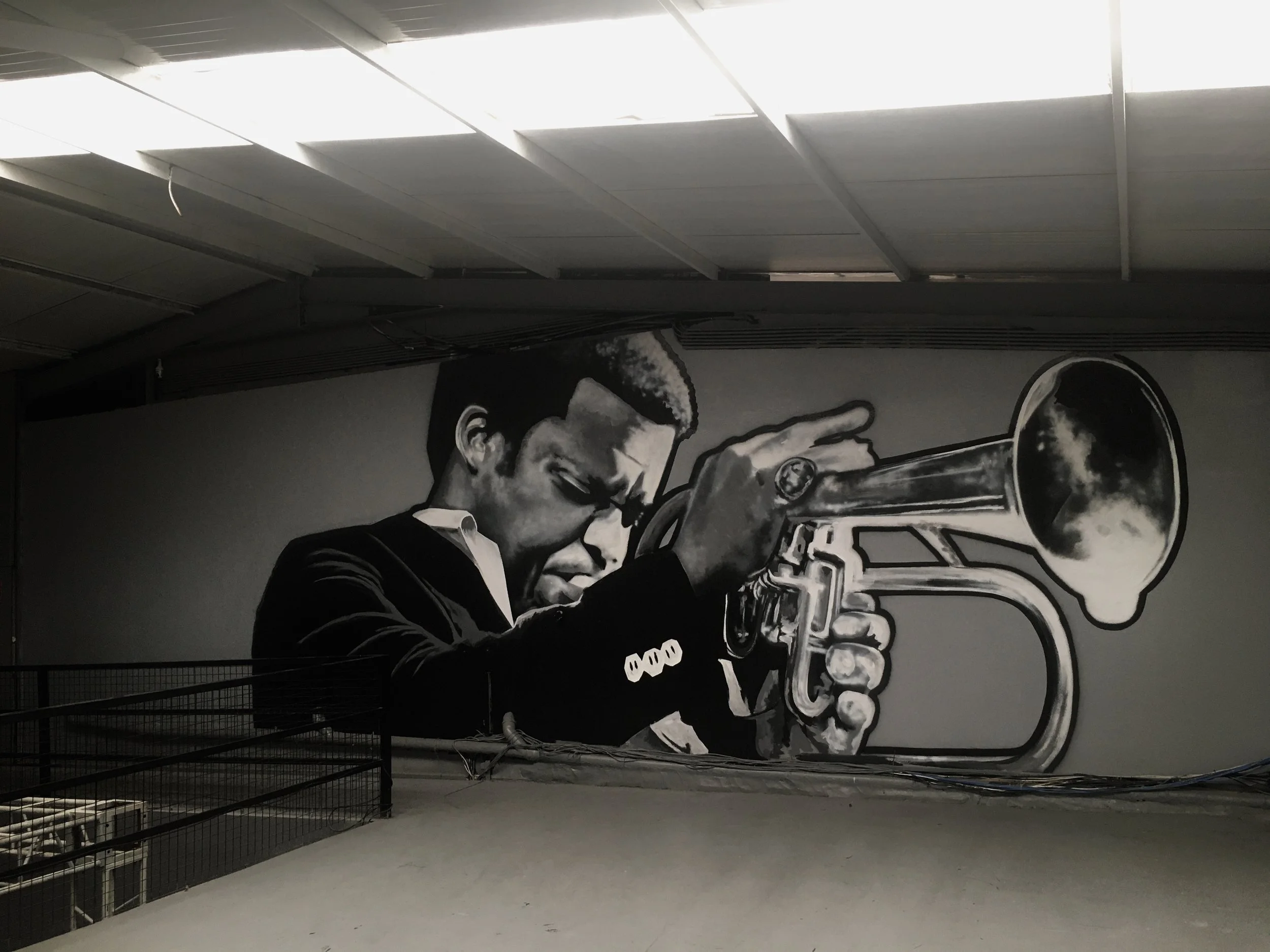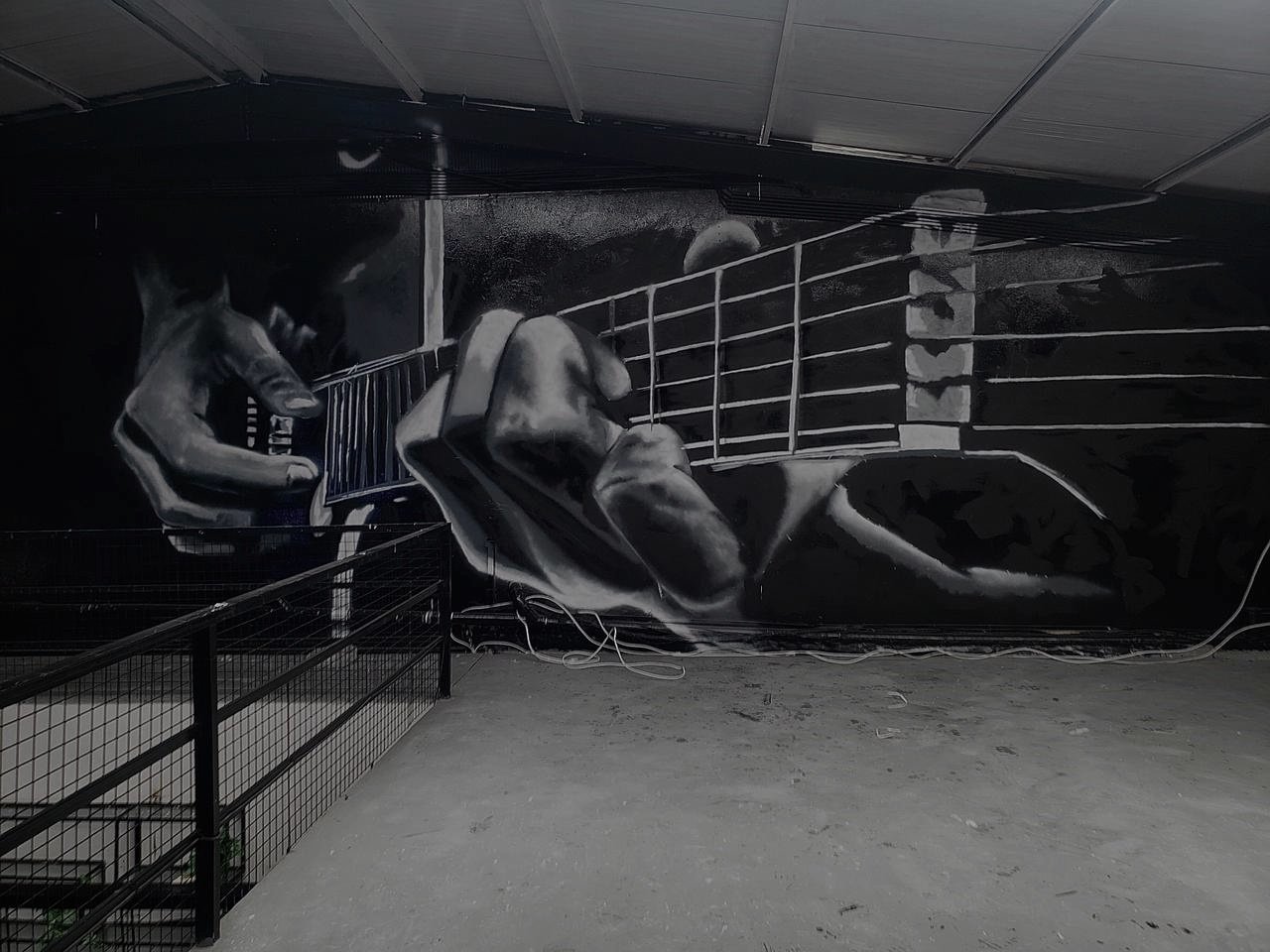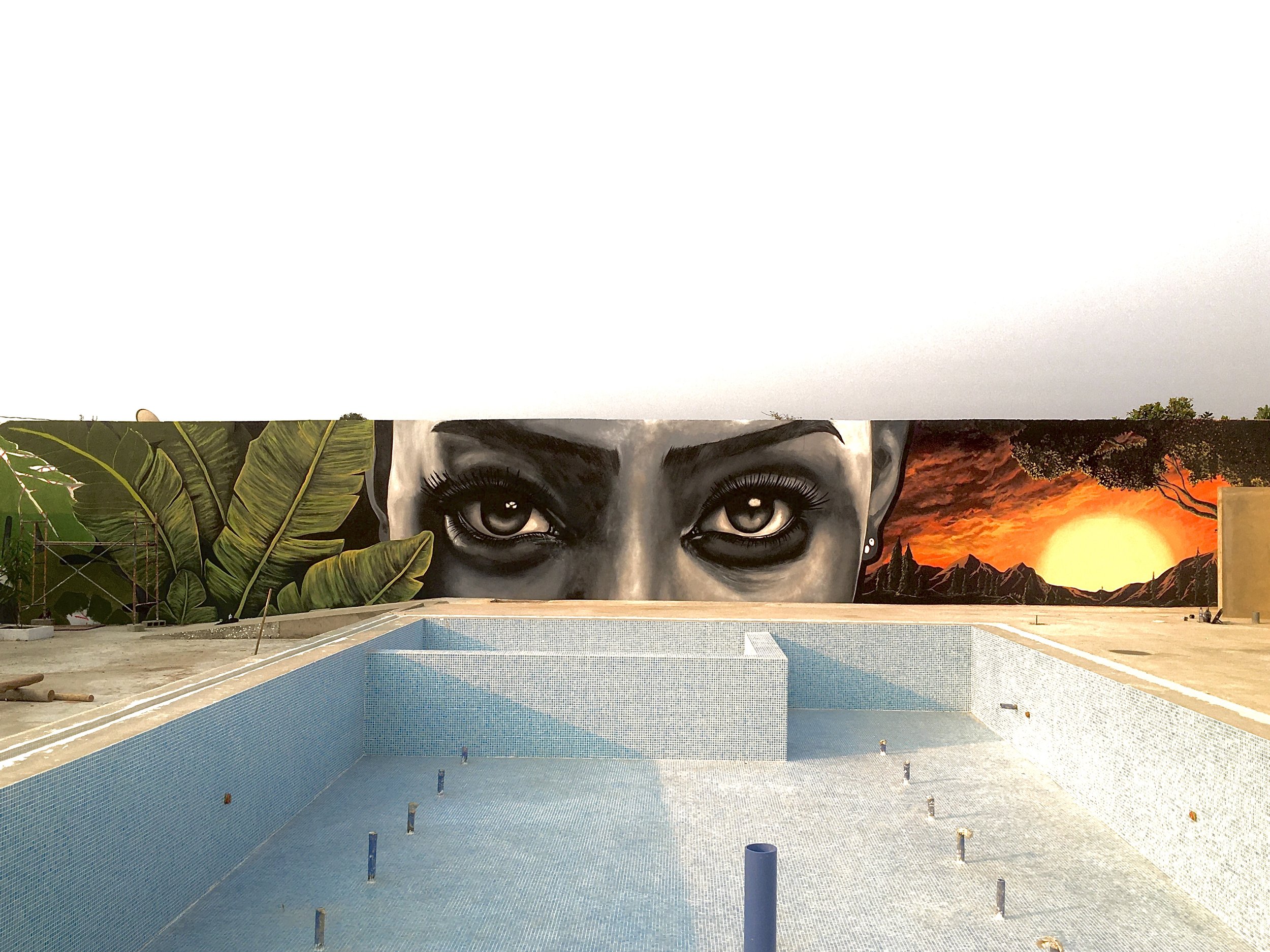ELOHIM
DIANGANI ANDRÉ (KNOWN AS ELOHIM),
PAINTER, URBAN ARTIST
instagram: @0elohim
Voices of the Streets: Visual Art as an Urban Language
Atizay: Can you tell us about yourself and how you got started in the urban art world?
Elohim: I’m originally from Luanda, the capital city of Angola. I’d say I’m self-taught. I’ve been painting since I was young. I started painting with my brother when I was probably about 13 or 14 years old—I can’t quite remember the exact age, but I started very early. I remember coming home from school and going out with my brother to gain some experience or understanding of painting. My family is full of artists; we all paint. My father was also an artist, although he has since passed away. He used to say that art is our heritage. So we’ve dedicated ourselves to it, putting everything we’ve learned into art to grow and thrive in this work we do. From that time, I’ve always loved art. I admired my brothers and what they created—how they painted always impressed me. Over time, I began to develop some skills myself. When I started high school, I met another artist. At that time, I wasn’t living with my parents or my mother anymore. I had lived with my mother for a long time, but later moved to stay with my older sister on the other side of the city to finish my schooling. Living in the capital, I was constantly exposed to art. I’d see sculptures, murals, and other artistic works on my way to school or home. One day, though I don’t recall exactly when, I saw a piece of art that changed everything for me—it was the start of my journey as an artist. It was then that Elohim, the artist, truly began to emerge. I was inspired by the work of an artist I deeply admired, who continued to inspire me even up until 2021 or 2022. I eventually met him at exhibitions and painting activities. Someone introduced me to him, and I told him I wanted to learn from him because he worked in urban art. He painted murals, graffiti, and the like. I had always appreciated graffiti, and I used to try copying it.
Elohim during the Urban Art Festival in Pelotas, 2024 (courtesy of the artist)
A.: What inspires your artwork?
E.: Back in 2010 or 2011, when I lived with my mom, I would paint graffiti in the community. I grew up in a neighborhood with a lot of delinquency, and local groups would invite me to paint. They wanted to be seen, to stand out, and I admired their courage. Through these experiences, I started discovering more about art. Each neighborhood I painted in allowed me to meet people, hear their stories, and understand what resources they did or didn’t have.
This connection with communities has profoundly shaped my work. I paint many figures and series of people, and behind every person I paint, there’s a story, an incentive, or a transformation. I aim to shift perspectives—to show that solutions and opportunities exist, even in places where they seem absent.
Art communicates; it rescues. For me, art speaks silently, and that’s what I love about it. One artist I worked with primarily painted in black and white, using gray tones for faces. I adapted to this style, but I eventually developed my own approach—my identity in black and white. These tones represent the experiences of joy and sadness, the ups and downs of life. The grayscale, including black and white, represents bitterness, challenges, and a life without color in a way. It also represents the anonymous people whose stories and goals I tell through painting without necessarily knowing them personally. While the colorful accessories and complements represent light, the good things we receive or create.
Elohim during the Art Battle in São Paulo, 2024 (courtesy of the artist)
A.: You recently arrived in Brazil. How has your experience been so far in the art scene? Are there any parallels or similarities you can draw between the artistic spaces you’ve navigated in Brazil and Angola?
E.: I’ve been in Brazil for two months now. I first came here for a graffiti and urban art festival in Pelotas. Shortly after arriving, I was invited to join a collective exhibition featuring major artists like Fábio de Roa and the Avant Graff project. I also participated in Art Battle, which I had long wanted to join, even back in Angola.
Speaking about art in Angola and Brazil, I believe urban art in Angola is still in its early stages but growing. There’s a need for more interaction, activities, investment, and support to elevate Angolan art to global levels. In Brazil, urban art is much more advanced. People here view art differently, and there are already collectors and enthusiasts, which helps artists thrive and showcase their work.
A.: What message do you hope viewers take away from your work?
E.: My goal is to internationalize my work, form partnerships, and be part of various projects, including workshops, lectures, and painting classes. I also teach and would be open to offering lessons.
I know the process is slow and challenging, but the key is persistence. Nothing surprises me because challenges are part of the journey. Over time, opportunities arise, and doors open. I’m aware there’s still much to do here in Brazil.
Finally, I want to thank the wonderful project Atizay—I hope I pronounced that correctly—for the invitation to share my story. This is my journey and my painting method. I hope you enjoy it. Some of my works will also be shared on the platform’s page.
Check out Elohim’s work below!
Artworks showed in order: Africa Power (2024), Eu Só Mulher (2024), Faz Música (2024), Notas e Percebes (2024), Olhar da Mulher (2024).
